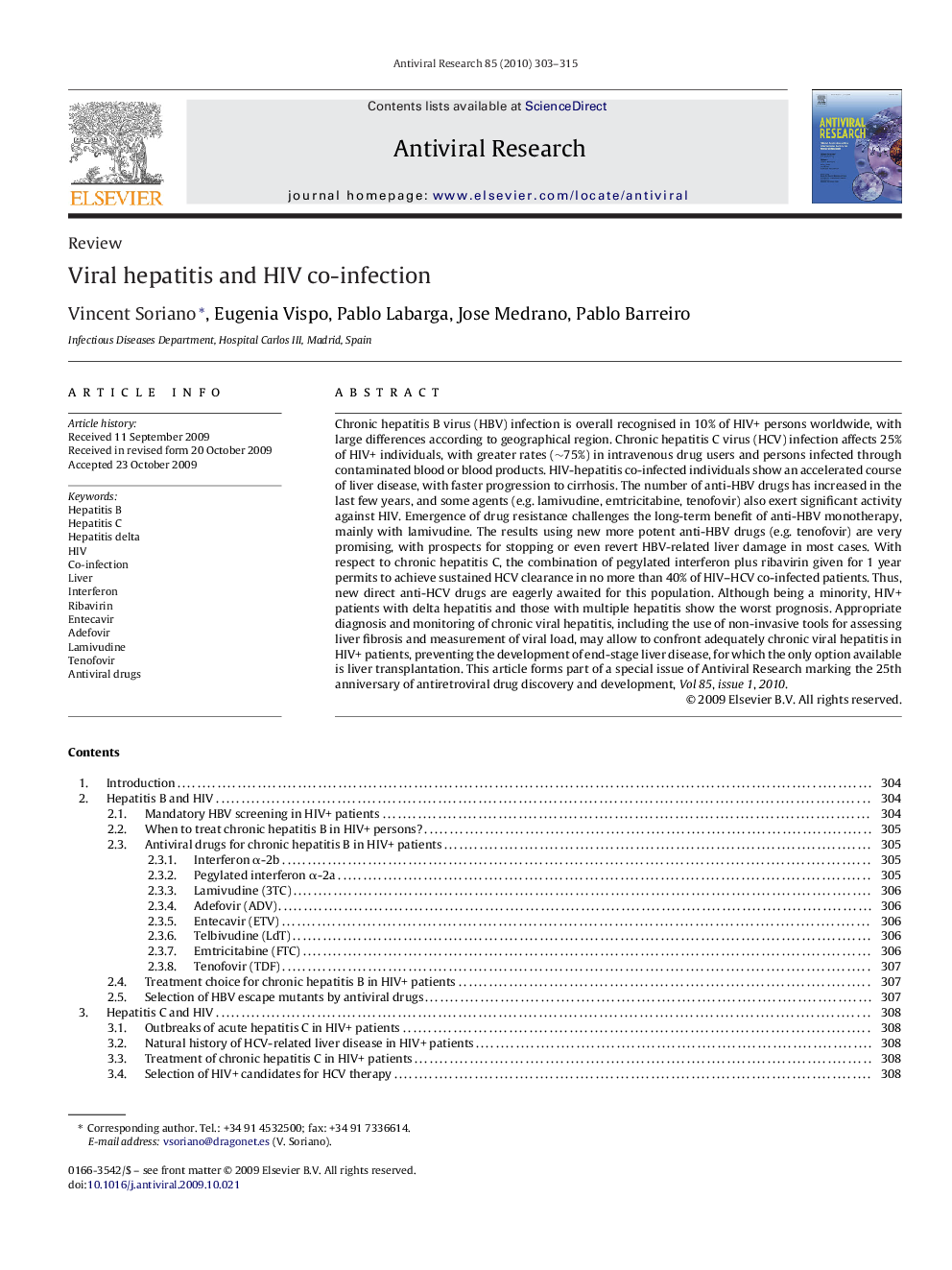| Article ID | Journal | Published Year | Pages | File Type |
|---|---|---|---|---|
| 2510794 | Antiviral Research | 2010 | 13 Pages |
Chronic hepatitis B virus (HBV) infection is overall recognised in 10% of HIV+ persons worldwide, with large differences according to geographical region. Chronic hepatitis C virus (HCV) infection affects 25% of HIV+ individuals, with greater rates (∼75%) in intravenous drug users and persons infected through contaminated blood or blood products. HIV-hepatitis co-infected individuals show an accelerated course of liver disease, with faster progression to cirrhosis. The number of anti-HBV drugs has increased in the last few years, and some agents (e.g. lamivudine, emtricitabine, tenofovir) also exert significant activity against HIV. Emergence of drug resistance challenges the long-term benefit of anti-HBV monotherapy, mainly with lamivudine. The results using new more potent anti-HBV drugs (e.g. tenofovir) are very promising, with prospects for stopping or even revert HBV-related liver damage in most cases. With respect to chronic hepatitis C, the combination of pegylated interferon plus ribavirin given for 1 year permits to achieve sustained HCV clearance in no more than 40% of HIV–HCV co-infected patients. Thus, new direct anti-HCV drugs are eagerly awaited for this population. Although being a minority, HIV+ patients with delta hepatitis and those with multiple hepatitis show the worst prognosis. Appropriate diagnosis and monitoring of chronic viral hepatitis, including the use of non-invasive tools for assessing liver fibrosis and measurement of viral load, may allow to confront adequately chronic viral hepatitis in HIV+ patients, preventing the development of end-stage liver disease, for which the only option available is liver transplantation. This article forms part of a special issue of Antiviral Research marking the 25th anniversary of antiretroviral drug discovery and development, Vol 85, issue 1, 2010.
